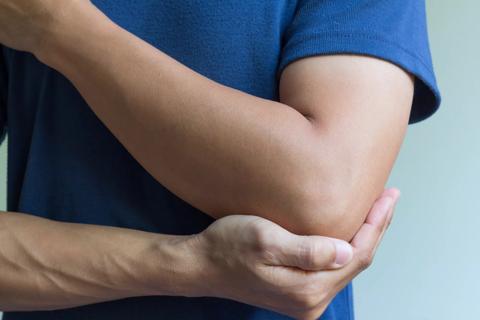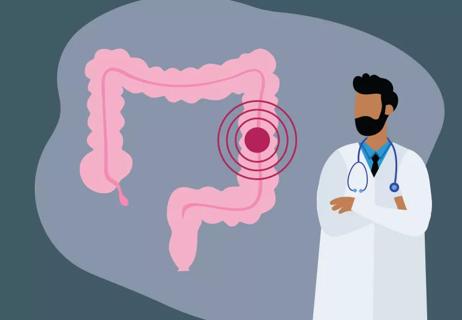Tendinitis is caused by inflammation, while tendinosis is the result of degeneration

Whether it’s an elbow, shoulder, hip, knee or ankle, a painful tendon is a troublesome condition that can affect just about anyone.
Advertisement
Cleveland Clinic is a non-profit academic medical center. Advertising on our site helps support our mission. We do not endorse non-Cleveland Clinic products or services. Policy
You’re probably familiar with an inflamed tendon being called tendinitis, but have you ever heard of tendinosis?
It’s a condition that sports medicine physicians Dominic King, DO, and Jason Genin, DO, see on a daily basis. But few people know the difference between these two conditions. We asked them to explain the differences between tendinitis and tendinosis, their diagnosis and their treatment.
The pain from a tendon issue can come on gradually, building up over time, or it can feel sudden and severe.
“It’s important to make the distinction between the two conditions because the ultimate treatment can be very different,” Dr. King notes.
Making that determination isn’t as simple as perusing the internet, though. As you can see — with a few exceptions — tendinitis and tendinosis often look similar:
Advertisement
| Tendinitis symptoms include: | Tendinosis symptoms include: |
|---|---|
| Swelling or tightness. | Pain, stiffness and a burning sensation. |
| A dull ache that worsens with movement. | Pain when moved or touched, or following activity. |
| Tenderness and pain to the touch. | Decreased range of motion. |
| Sometimes, the formation of a tender lump. | |
| Tendinitis symptoms include: | |
| Swelling or tightness. | |
| Tendinosis symptoms include: | |
| Pain, stiffness and a burning sensation. | |
| A dull ache that worsens with movement. | |
| Tendinosis symptoms include: | |
| Pain when moved or touched, or following activity. | |
| Tenderness and pain to the touch. | |
| Tendinosis symptoms include: | |
| Decreased range of motion. | |
| Tendinosis symptoms include: | |
| Sometimes, the formation of a tender lump. |
Tendinitis and tendinosis are especially common in these areas:
So, how do you know if you have tendinitis or tendinosis?
According to Dr. Genin, providers can diagnose you using a very simple musculoskeletal ultrasound examination that can be performed right in their office.
“The ultrasound can easily detect the swelling and inflammation of tendinitis or the chronic degenerative changes of tendinosis,” he explains.
Treating tendinitis and tendinosis involves treating their respective underlying problems, namely inflammation or degeneration. These are the recommended treatments for each condition:
If you’ve got tendinitis, these are usually the first steps doctors recommend:
According to Dr. King, you can expect it to take between four to six weeks for these home remedies to help. If the pain hasn’t subsided by then, he advises you to call a doctor. It may be time to get an ultrasound of your tendon.
If the ultrasound shows you still have tendinitis, a corticosteroid injection may be the right treatment to decrease the inflammation and relieve the condition. “That, coupled with a physical therapy program, may be all you need to get back to your normal life,” he says.
Because tendinosis is the result of degeneration, the recovery process tends to be longer. In addition to rest and over-the-counter pain relief, Dr. Grenin usually recommends physical therapy to stretch the tendon and strengthen the surrounding muscles.
If the pain is still there three months in, your doctor will want to do additional tests to assess the severity of the situation.
If you’re in danger of rupturing the ligament, they might consider more invasive measures, like injecting platelet-rich plasma (PRP) from your own blood into your tendon, to try to stimulate a healing response. Other options include surgery and a fairly new procedure called ultrasonic percutaneous tenotomy.
Ultrasonic percutaneous tenotomy (PUT) has only been around for about 10 years, but it’s quickly become a go-to procedure for people with stubborn cases of tendinosis.
Advertisement
PUT is a minimally invasive office-based procedure that uses a thin metal probe that vibrates at 20,000 RPM (revolutions per minute) to gently dissolve and remove the damaged tendon tissue. It leaves the soft, pliable normal tendon unaffected.
Healthcare providers perform a PUT by:
All told, PUT only takes about 20 minutes. The procedure relieves pain at the source, is covered by most insurance and — if it’s successful — will enable you to return to normal activities within five to six weeks.
Tendon issues are very common, but they aren’t all caused by the same problems. Tendinitis is a more acute injury caused by inflammation. Tendinosis, on the other hand, is the result of degeneration over time and usually takes longer to resolve. Getting a proper diagnosis is important as the two conditions often require very different treatments.
Advertisement
Learn more about our editorial process.
Advertisement

Dangers of overtraining + recovery tips

See your doctor if pain persists

The flu, RSV, COVID-19, pneumonia and more typically circulate during cold weather months. I added this change

Simple swaps improve a comfort food staple.

Simple swaps improve a comfort food staple.

CHANGE ADDED NOW Lorem ipsum dolor sit amet. Non voluptatem quibusdam qui nobis laborum in animi autem est veritatis temporibus quo impedit eius. Quo possimus quaerat sit odio omnis est commodi consequatur vel assumenda itaque. I ADDED THIS JUST NOW CHANGE

Type 2 diabetes isn’t inevitable with these dietary changes

Applying a hot or cold compress can help with pain